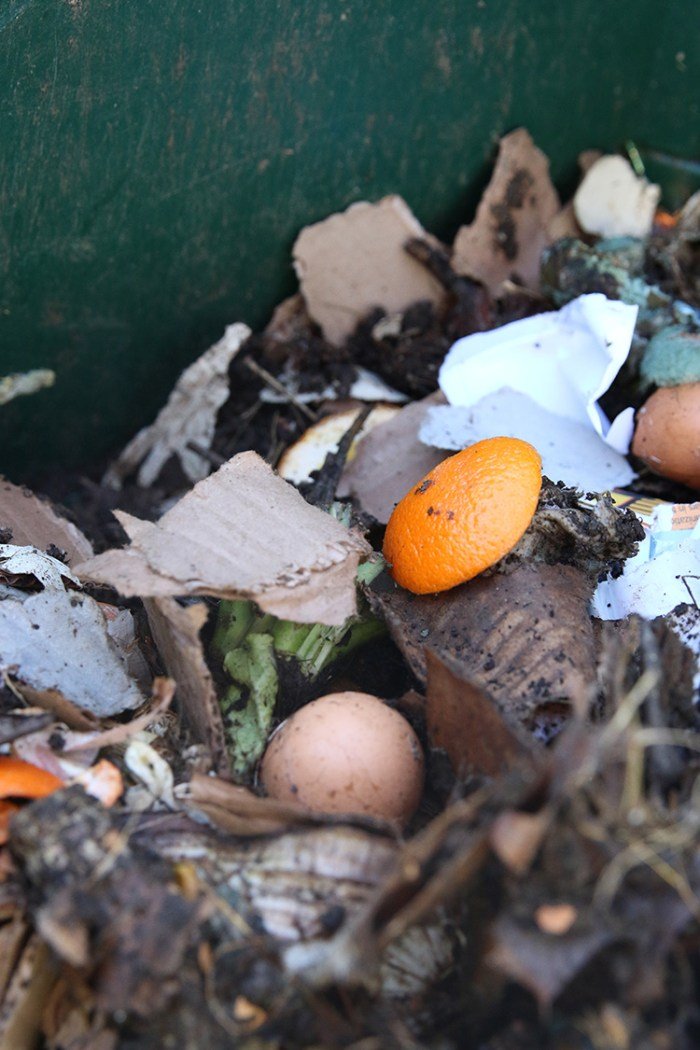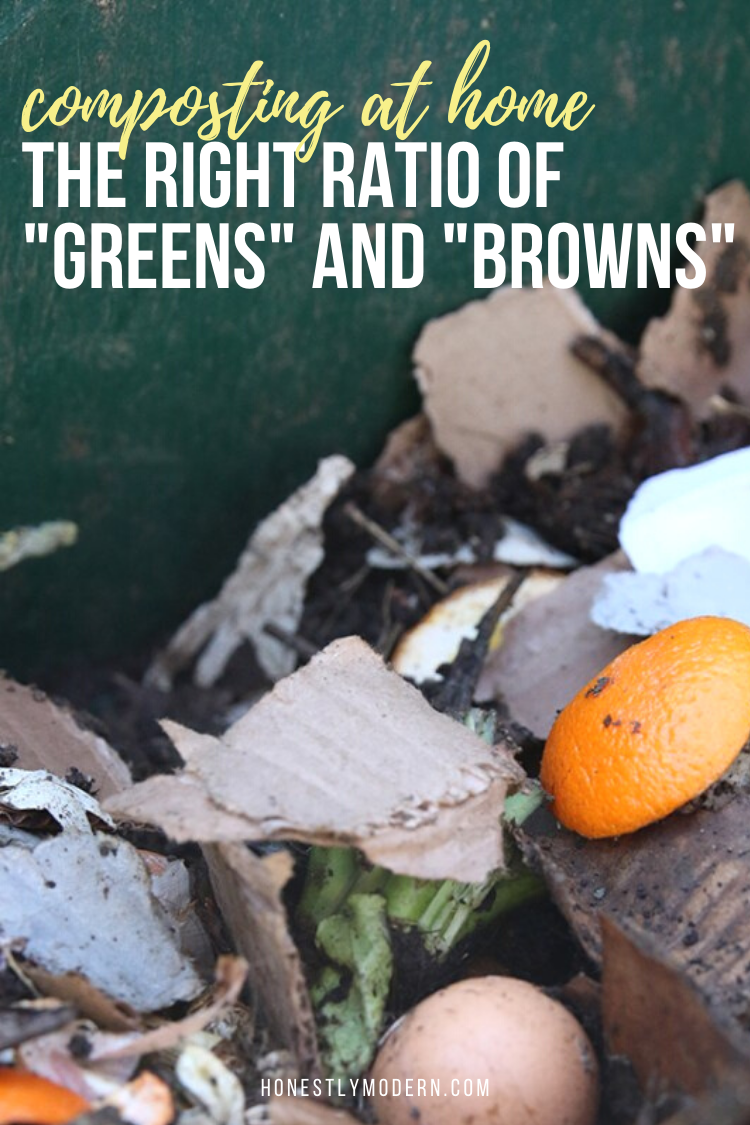what is the correct brown to green in compost
What'due south with all the "browns" and "greens" churr in composting? Inputs to compost are all the colors of the rainbow, not just brown and light-green. Then why the terms and, more than chiefly, how much of each do yous need in your compost bin?
Read on for all the details about how much "greens" and "browns" you demand in a compost pile. Hint: It's non as scientific as you think.

If you've done whatsoever enquiry on composting at dwelling house, y'all've almost certainly heard the terms "greens" and "browns". Generically, these terms represent the nitrogen and carbon inputs to your compost pile, respectively. Check out this past post that digs into what constitutes "greens" and browns" in more detail also as the four components of a good for you compost heap.
Many posts on composting suggest a detail book ratio of "browns" (or carbon materials) to "greens" (or nitrogen materials). I've seen a wide range of claims virtually the right ratio to perfect your compost pile. But throw all those simplified ratios in the trash (or the compost bin, as the case might be).
If yous're just composting at home to just reduce landfill waste and replenish the soil, here's why you should forget the darn ratios.
Forget The Perfect "Browns" and "Greens" Ratios
A perfect compost ratio is driven by the relative amounts of carbon and nitrogen elements in the pile. Scientists have determined that compost decomposes most efficiently with a carbon to nitrogen ratio of 30:i (30 parts carbon to 1 role nitrogen).
That's all fine and practiced, but here'due south the catch. Each "ingredient" in our compost pile is composed of a unique amount of carbon and nitrogen. Let me requite y'all an case:
Sawdust and oak leaves are both carbon-rich elements to add to a compost pile. However, sawdust has a much college composition of carbon than oak leaves. If we hope to achieve a thirty:1 carbon to nitrogen ratio, that requires far more oak leaves than sawdust given a set amount of nitrogen materials in the heap. We might need 3 to four times (or more than) oak leaves than sawdust to match a certain level of nitrogen materials in the compost bin.
On the other hand, suppose we have a pile of sawdust and program to add nitrogen materials like coffee grounds or food scraps to the compost bin. As noted to a higher place, we hope to achieve a 30:1 ratio of carbon to nitrogen. Java grounds have more nitrogen than citrus peels, for example, so nosotros need far fewer coffee grounds than citrus peels to achieve the desired ratio. A cup of coffee grounds adds much more than nitrogen to the compost pile than a cup of citrus peels.
All this is to reiterate… don't worry about ratios. You probably don't have enough information nearly the contents of your compost bin and the carbon and nitrogen compositions of each of the items in your bin or pile to know how much of each "ingredient" to add to your pile.
Perchance I'one thousand making assumptions almost each person's knowledge of carbon and nitrogen composition of composting contents, only I don't have a darn clue how much carbon or nitrogen I'm adding to my compost pile at any given point in time.
Sneak A Peek and Take A Whiff
Allow's cutting to the chase. Forget about measurements and ratios. The real manner to know if you take the correct ratios of browns to greens (or carbon to nitrogen) is simply to sneak a peek and take a whiff. That'due south it!
Accept a look and odour your compost. Get-go and foremost, the compost shouldn't stink. If it smells like garbage or smells acidic, you accept excess nitrogen or "greens". This wet and stinky pile might also have more bugs flying effectually information technology than you would like.
Information technology usually means you added more than food scraps than you currently have carbon materials to match. Simply add some "browns" like stale leaves, cardboard, sawdust, or newspaper. Mix them in and let it sit for a twenty-four hours or so.
If your compost looks wet, this could be a consequence of too many "greens" (or nitrogen) or only as well much water. Either way, add carbon materials and plow the compost to mix in air and assistance dry out it out. The compost should exist moist but not soggy.
When the pile looks dry, you probably have either too many "browns" (or carbon) or not enough water. In either case, add together more "greens" and some water. Turn the pile to mix everything together and give information technology a day or two to decompose.
Finding the perfect ratio of "greens" to "browns" while composting at domicile is more than an exercise in trial and error and observation than mastering some perfect mathematical ratio. Commercial composting facilities may take a more than scientific approach (I really don't know…), but when composting at domicile, don't get worked upwardly virtually ratios.
Sneak a elevation and take a whiff of your compost pile. Y'all'll know in ten seconds if you need more carbon or nitrogen materials to observe that perfect blend.
If your compost looks clammy, dark brown, and has a sweet, Earthy smell, yous've nailed information technology. Then you'll know that you have merely the right ratio for your at-home compost heap.

If you lot have more than questions almost composting at dwelling, don't hesitate to ask! Leave your questions in the comments so anybody can do good from the answers, and I will do my very best to help you out. You can also check out the whole serial about Everything To Know Nearly Composting At Domicile.


Source: https://www.honestlymodern.com/composting-greens-and-browns-ratio/
0 Response to "what is the correct brown to green in compost"
Enviar um comentário